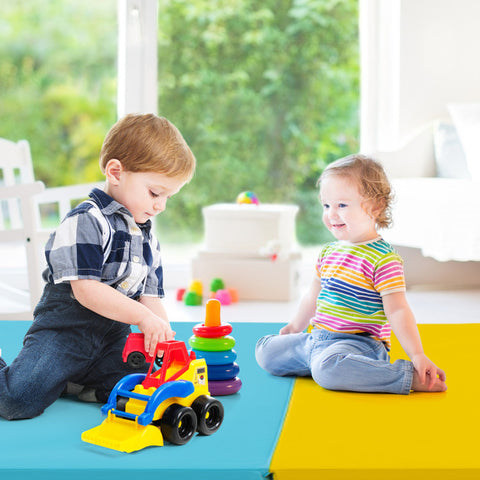News
The Importance of Proper Storage for Gymnastics Mats: Tips to Extend Lifespan and Maintain Safety
In both home and professional training environments, gymnastics mats are a key investment. But while many focus on the mat's surface, density, or size, proper gymnastics mat storage is often overlooked. Improper storage can reduce the mat's lifespan, affect its safety performance, and lead to unwanted expenses. In the first 100 words, it's crucial to understand that correct gymnastics mat care and storage plays a vital role in preserving its function, shape, and hygiene—especially for folding mats, crash pads, and inflatable tumbling mats.

Common Problems Caused by Poor Storage
Leaving gymnastics mats exposed to fluctuating temperatures, moisture, or sunlight can lead to:
-
Mold or mildew buildup in foam layers
-
Cracks and hardening in vinyl or PVC covers
-
Deformation or loss of rebound in foam cores
-
Lingering odors from trapped sweat and bacteria
These issues directly compromise the safety and comfort of the mat, especially when used by children or athletes who rely on consistent surface conditions.
How to Store Gymnastics Mats the Right Way
1. Clean Before Storing:
Always wipe the mat down after use using a mild soap or disinfectant. This prevents sweat, dirt, and oils from deteriorating the surface or causing bacterial growth.
2. Keep in a Cool, Dry Place:
Avoid garages or basements prone to dampness. Instead, use a climate-controlled area such as a closet, equipment room, or under-bed space.
3. Avoid Stacking Heavy Objects:
Do not place heavy weights or gear on top of folded or rolled mats. This can create permanent indentations or misalign the internal foam layers.
4. Use Storage Racks or Wall Mounts:
For gyms or studios, consider installing wall-mounted racks designed for gymnastics mats. These help mats retain their shape and allow airflow to prevent moisture buildup.
5. Don’t Leave Inflatable Mats Pressurized:
If you're storing air tracks or inflatable mats, deflate them fully before rolling and storing. Prolonged pressure can strain seams and valves.
Seasonal Storage Considerations
For those using mats outdoors or in seasonal home gyms:
-
Rotate mats seasonally to reduce wear on one side.
-
Use waterproof covers if mats must be kept in garages or sheds.
-
Allow mats to air out periodically to prevent stale odors.
Tips for Long-Term Storage
-
Label mats if you have multiples, so you can rotate usage.
-
Check stored mats quarterly for signs of degradation or pests.
-
Never store mats in contact with concrete floors—use a pallet or padding underneath.
Benefits of Proper Gymnastics Mat Storage
-
Extended product life, reducing the need for frequent replacements
-
Consistent safety performance, maintaining proper cushioning and grip
-
Improved hygiene, especially for shared-use mats in studios or schools
-
Professional appearance, as mats stay clean, uncracked, and free from fading
Conclusion: Take Storage Seriously for Safer Practice
In the final 100 words, reiterate that storing gymnastics mats correctly is not just about saving space—it's about protecting an essential piece of safety equipment. Whether you're a parent, coach, or gym owner, taking time to clean, fold, and store your gymnastics mats properly ensures they continue to perform at their best. With just a few simple steps, you can maintain hygiene, extend the mat’s usable life, and support safer workouts or routines for years to come.

